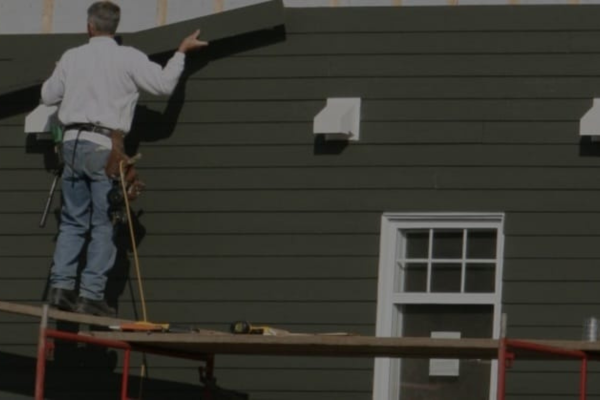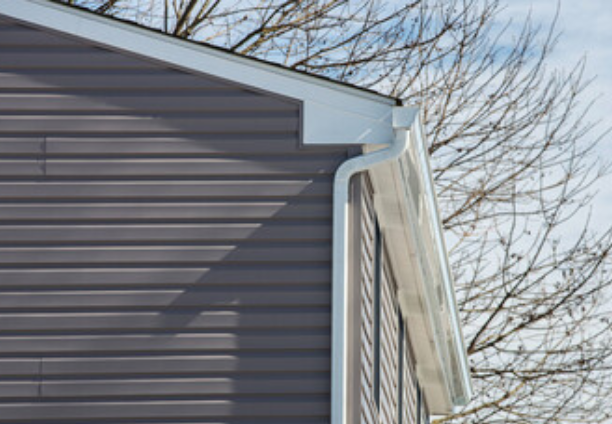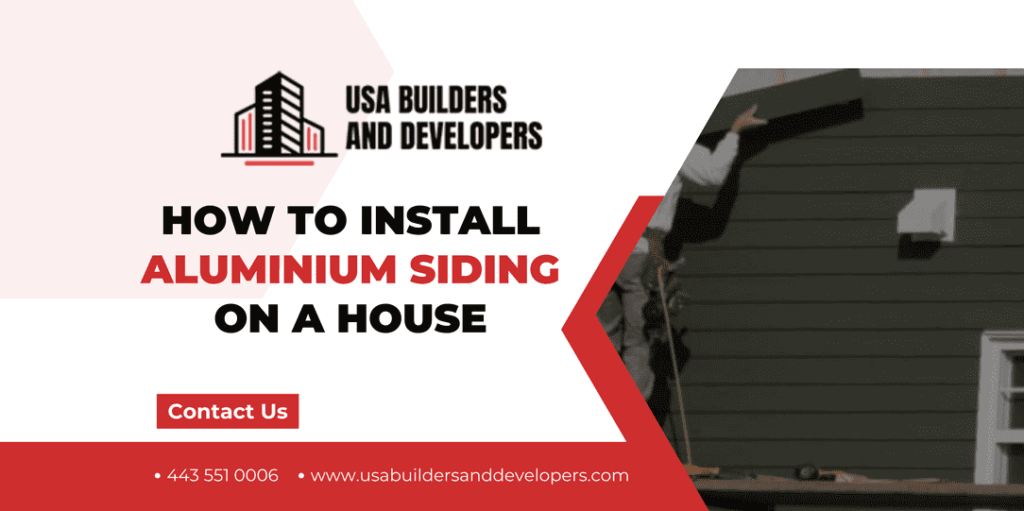Aluminum siding remains one of the most durable, low-maintenance, and weather-resistant options for homeowners looking to protect and beautify their home’s exterior. Whether you’re updating your house or tackling a fresh installation, this DIY guide will walk you through the process step by step. With the right tools, preparation, and attention to detail, you can achieve a clean, professional-looking finish and boost your home’s curb appeal.
What Is Aluminum Siding?
Aluminum siding is a lightweight metal material used to cover exterior walls. It’s commonly made from recycled aluminum and formed into horizontal or vertical panels. Aluminum siding resists rust, pests, mold, and fire, and it offers impressive longevity, often lasting 30 to 50 years with minimal upkeep.
This siding also comes pre-painted or primed, with various color and texture options that can mimic wood grain for a classic look.


Why Install Aluminium Siding?
Here’s why more homeowners are choosing to install aluminium siding:
- Paintable Surface: Easily refreshed with new paint if you want to update your home’s look.
- Weather-Resistant: Great for homes in humid, coastal, or storm-prone areas.
- Fire-Resistant: A non-combustible material that adds an extra layer of safety.
- Eco-Friendly: Often made from recycled aluminum and fully recyclable at the end of its life.
- Low Maintenance: No rot, warping, or termite issues like with wood.
What You’ll Need to Install Aluminium Siding
To begin, gather the following tools and materials:
- Measuring tape
- Hammer or nail gun
- Aluminum siding panels
- Galvanized or aluminum nails
- Tin snips or power shears
- Ladder or scaffolding
- Safety gloves and safety glasses
- Level
- Chalk line
- Starter strips, corner posts, and trim pieces
- House wrap or weather-resistant barrier (if needed)
🛠️ Pro Tip: For larger homes, consider renting scaffolding for better stability and reach.
Step-by-Step: How to Install Aluminium Siding
Step 1: Measure Your Home’s Exterior
Use a measuring tape to calculate the total square footage of the exterior walls. Be sure to subtract for doors and windows and add 10% extra to account for waste and cuts.
Divide your total square footage by the coverage area per siding panel (usually listed on the packaging) to determine how many panels you need.
Step 2: Prepare the Wall Surface
Remove old siding, nails, or debris from the walls. Ensure the surface is smooth, dry, and damage-free. For new installations, apply a weather-resistant barrier or house wrap to prevent moisture penetration behind the siding.
🧱 Fill in any cracks or gaps in sheathing or framing before proceeding.
Step 3: Install the Starter Strip
Begin by snapping a chalk line around the base of your wall. Attach the starter strip along this line, ensuring it’s perfectly level. The starter strip is what your first row of siding will lock into—accuracy here is crucial.
Step 4: Begin Siding Installation from the Bottom Up
Place the first aluminum panel onto the starter strip at the bottom of the wall. Make sure it locks securely into the starter strip and is completely level. Nail the panel at the top of the nailing slot, but do not drive nails tightly—leave about 1/32″ of space to allow for expansion and contraction.
Step 5: Continue Overlapping Panels
Install each subsequent panel so that it overlaps the one below it by at least 1 inch. This overlapping helps prevent water infiltration and provides a tighter, more weatherproof finish. Always check that each panel is level before nailing.
Step 6: Cut Panels Around Windows and Doors
Use tin snips or power shears to cut panels as needed when installing around windows, doors, and other obstacles. Leave at least a ¼-inch gap around these openings to allow for expansion and movement.
Install J-channel trim around windows and doors for a neat, professional appearance and additional weather protection.
Step 7: Add Corner Posts and Finishing Trims
Install corner posts on the edges of walls to support panel ends and create clean corners. Use undersill trim at the top edges of walls and beneath windows to secure the final pieces of siding.
Step 8: Inspect and Secure Panels
Once the siding is installed, inspect your work. Look for:
- Loose or uneven panels
- Gaps in trim or corners
- Areas that may need extra nailing
Walk around the entire home and fix any imperfections before finishing the job.
Safety Tips for DIY Aluminum Siding Installation
🔒 Safety First! Always wear gloves to protect your hands from sharp panel edges.
📏 Use a sturdy ladder or scaffolding with proper support.
🦺 Wear safety goggles when cutting panels.
👷 Don’t work alone, especially when climbing or lifting panels.
Maintenance Tips for Aluminum Siding
While aluminum siding is low-maintenance, some occasional care can help extend its lifespan:
- Wash annually with a garden hose or soft pressure washer to remove dirt.
- Repaint every 10–15 years if the original paint begins to fade.
- Check for loose nails or panels after storms.
- Repair minor dents with a rubber mallet and sand down scratches before touching up with paint.
Is Aluminum Siding Still a Good Option in 2025?
Yes, Aluminum siding remains a competitive, budget-friendly option in today’s market. It’s especially well-suited for homes in areas with high humidity, coastal air, or wildfire risks due to its non-combustible nature.
Though materials like vinyl and fiber cement are popular, aluminum is still widely chosen for its durability, ease of maintenance, and eco-friendly profile.
Final Thoughts
Installing aluminium siding on your home is a manageable project if you’re prepared and patient. With the right tools and attention to detail, you can transform your home’s exterior, improve energy efficiency, and add lasting value.
If you’re not comfortable with heights or complex cuts, don’t hesitate to hire a professional. But if you’re ready to go the DIY route, follow this guide closely and take your time. The result will be a refreshed, protected, and polished home exterior you’ll be proud of.
Contact Us
For professional aluminum siding installation or any other home improvement needs, contact USA Builders and Developers. Our expert team is here to provide top-quality service and answer any questions you may have. Stay connected with us on Social media for latest updates and tips!
Have Questions? Call Us Now!
We’re here to help—quick answers, friendly service, anytime you need!

